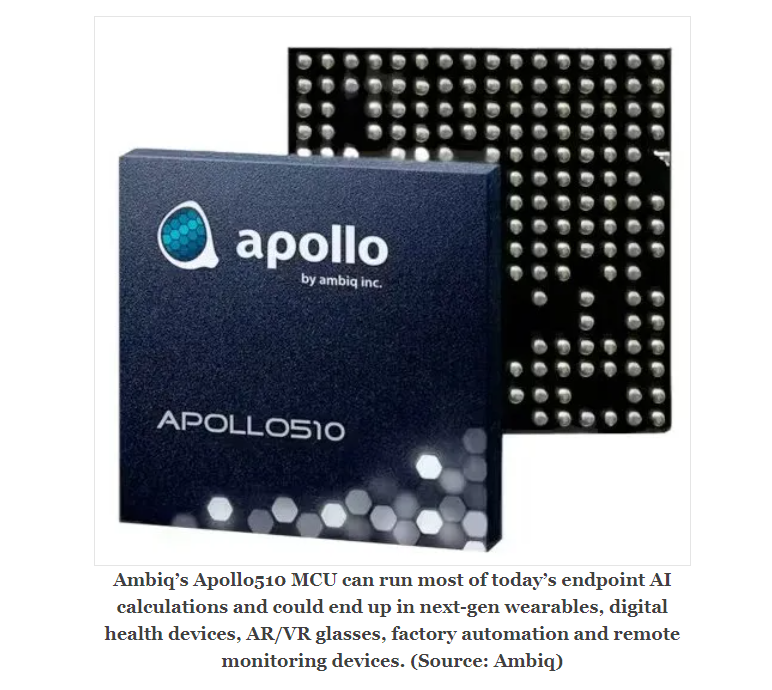
As the edge becomes smarter, the challenge becomes to increase machine learning (ML) and reasoning without increasing power consumption - microcontrollers (MCUS) optimized for edge AI applications are an important part of this puzzle.
Infineon Technologies' PSOC Edge MCU family is aimed at developers who want to bring new machine learning-enabled iot, consumer and industrial applications to market. Steve Tateosian, Infineon's senior vice president of consumer, industrial and iot MCUS, iot, Computing and Wireless, told EE Times in a briefing that the E81, E83 and E84 options focus on availability. "More and more AI will end up on the edge."
This reduces latency in sending everything back to the cloud, while also improving security because the entire data stream doesn't need to go to the cloud, he said. Tateosian said that for applications involving object detection, appropriate action can be taken immediately, which also reduces bandwidth consumption.
Under the hood, the PSO MCU family features the Arm Cortex-M55 architecture, which along with Arm Ethos-U55 and Cortex-M33 enhances Helium DSP support. All of this is integrated with Infineon's proprietary hardware accelerator Online, which is specifically designed for neural network acceleration.

Smarter hardware, leaner software
Tateosian said hardware at the edge is becoming more capable in terms of performance and available memory, while software is getting smaller and more efficient.
Having a trio of MCUs in the PSOC series allows flexibility depending on the needs of the application, Tateosian said, including power constraints and any “always on” constraints. Unlike a consumer smartphone, he said, these edge devices go weeks or months without the battery being charged or being changed.
At the high end of the series, the E84 is aimed at graphics-enabled applications, such as fitness wearables, high-end smart thermostats or smart locks, Tateosian said, allowing more ML to be done on-chip. Many applications are sensor-based to support anomaly detection and predictive maintenance in industrial settings, as well as to detect people when they walk into the room for security or environmental control purposes, he said.
“Memory is key to a lot of these applications,” Tateosian said, adding that high levels of security are also expected and required.
Layered on top of the hardware are ML tools and enablement through Infineon’s Modus Toolbox, which incorporates capabilities through its acquisition of Imagimob. Tateosian said the tools allow customers to do end-to-end ML development with ready-made models for those who are just getting started.
He said the PSOC MCU series is accompanied by the connectivity, middleware and voice ML enablement to help accelerate development and quickly integrate advanced ML capabilities without needing specialized expertise.
Like Infineon, Ambiq is looking to make the edge smarter without consuming more power. It recently launched the Apollo510, the first in its Apollo5 SoC series, to support endpoint AI, including speech, vision, health and industrial AI models, on battery-powered devices.
Apollo510’s hardware and software use the Arm Cortex-M55 CPU with Arm Helium to reach processing speeds up to 250 MHz and achieve up to 10× better latency than its predecessor, the Apollo4. Like Infineon, Ambiq is eyeing energy efficiency to support sophisticated speech, vision, health and industrial AI models on battery-powered devices, Carlos Morales, Ambiq’s VP of AI, told EE Times in an interview.
He said the Apollo510 can run most of today’s endpoint AI calculations, including low-power sensor monitoring, always-on voice commands and telco-quality audio enhancement, which means the MCU could end up in next-gen wearables, digital health devices, AR/VR glasses, factory automation and remote monitoring devices.

Staying local dramatically reduces latency
Morales said IoT endpoint device manufacturers are power-conscious as they look to expand on-board AI/ML capabilities. For security, Apollo510 integrates Arm TrustZone technology with a physical unclonable function, tamper-resistant OTP and secure peripherals.
Morales said that for many real-time edge AI applications, sending things to the cloud isn’t practical. “The latency is too long.”
The introduction of new MCUs to support edge AI comes at a time when generative AI (GenAI) is getting most of the attention, despite representing a small percentage of AI that’s being deployed, Morales said. The non-GenAI, “supervised” AI is growing 3× or 4× faster.
While GenAI hoovers up text, images and video, running the risk of “garbage in, garbage out” supervised AI is more purposeful. Morales said supervised learning for the kinds of smaller AI tasks done at the edge means the data requires careful handling, especially for medical applications. “There’s no reason for my heart rate monitor to know about Shakespeare,” he said.
About US
